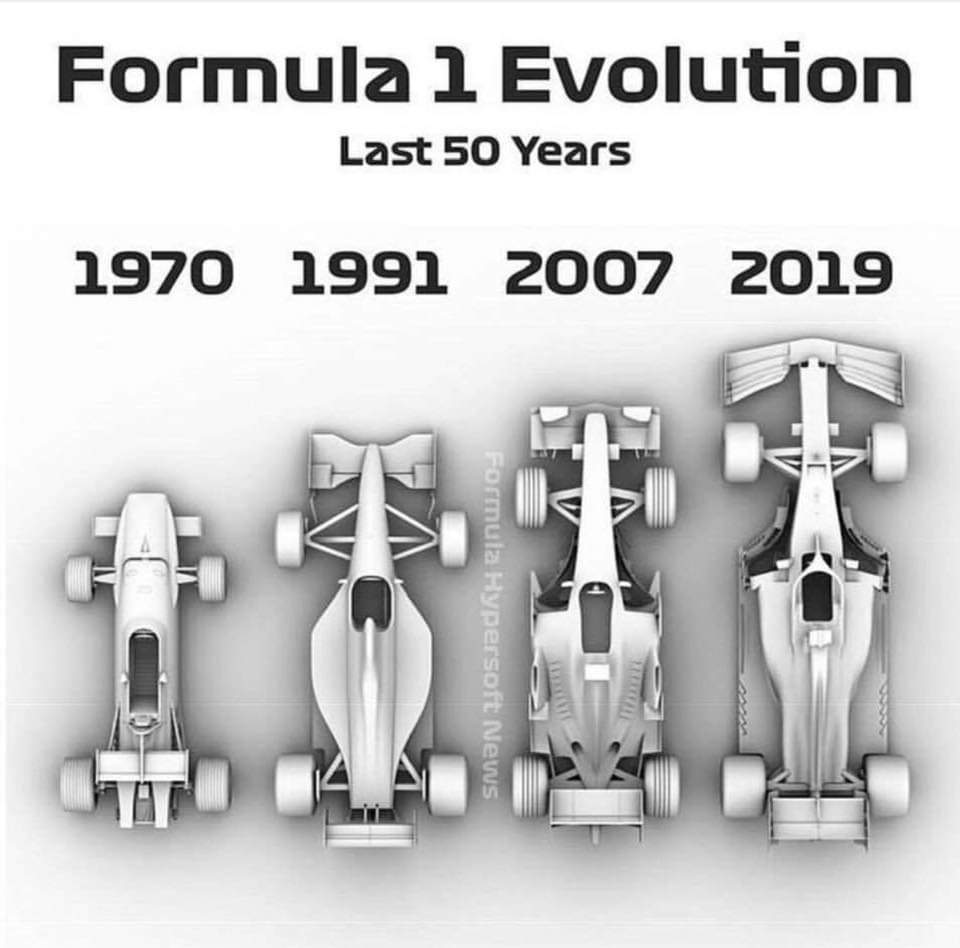
What's interesting about this image is that while the cars got a lot longer over the last few years, they seem to have gotten narrower in the sidepods. So doesn't this basically mean that if the rules mandated that the cars were shorter, they could just make the sidepods wider and be done with it? Of course, it would increase drag, but if it's the same for everyone, who cares?
In my opinion, a nice way to decrease the mass of the cars would be to have a stable set of rules (yeah, like that was possible) and then decrease the minimum weight by 5kg every year so that the weight of the cars could slowly creep down without significantly increasing costs for the teams.



